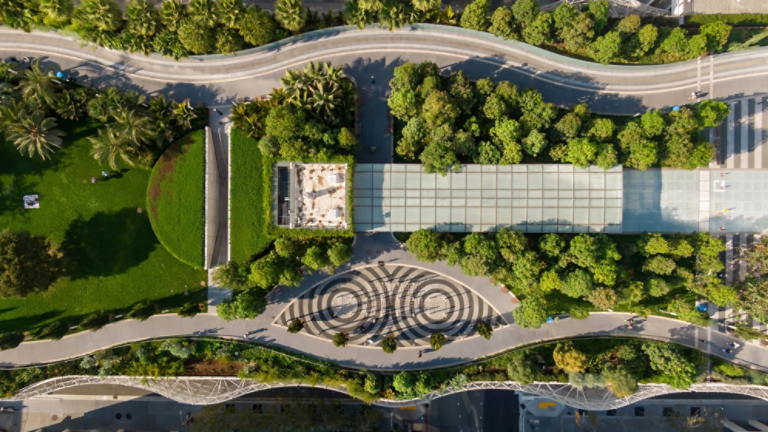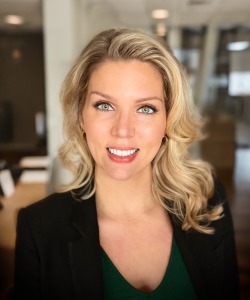Blog
Published: July 18, 2022
6 Ways Better Buildings Create Better Communities
Discover how working with Trane Commercial HVAC to improve aging building infrastructure in public buildings can create more resilient and sustainable communities.


1. Better buildings provide economic returns
Did you know that over 40% of the world’s energy consumption is used to provide comfortable and well-lit buildings?1 As a major line item on most city budgets, improving the efficiency of public facilities can go a long way to help reduce overall costs. As savings are realized, these dollars can be reallocated to fund future infrastructure investments or other community priorities.
Beyond efficiency, infrastructure projects attract innovation and talent that can drive economic development. Upgrading aging facilities, maintaining connected buildings, and developing renewable energy systems rely on a skilled workforce and create local jobs.
2. Beyond smart cities: supporting secure communities
Protecting the public spaces where citizens live, learn, work, and play is critical to the overall health and prosperity of our communities. Our kids spend their days in schools and gymnasiums. Citizens rely on community centers and libraries as emergency shelters in the face of natural disasters. And our most vulnerable populations often rely on public buildings for housing, resources and workforce development. Not to mention the millions of government employees who work in public facilities each day.
Numerous communities leverage connected building management and intelligent automations to mitigate threats to the structural integrity, comfort, air quality, and cybersecurity of these critical civic spaces in real-time.
3. Connected buildings offer scalable community resilience
From seasonal streetlight schedules near local parks to summer cooling in senior centers and jails, community energy demands are constantly fluctuating. Not to mention the ebbs and flow of the population within a city or community over time.
Scaling community resources becomes even more critical in the face of a natural disaster. Libraries and fire stations become life-protecting emergency shelters in the face of power outages, pandemics, and natural disasters. Equipping these facilities with reliable power through contingency resources like energy storage helps to ensure these shelters have power to continue supporting the community 24/7 – even if a disaster collapses other power sources. A step further, equipping these facilities with on-site renewable energy generation systems can offer energy independence and resiliency.
4. Modernize without taxpayer funds
Did you know you can leverage energy and operational savings through existing assets to improve aging infrastructure without financially impacting taxpayers? Using an Energy Savings Performance Contract, you can fund capital improvement and facilities modernization projects using future energy savings over the term of the contract. This means no initial capital is required.
Additionally, Trane is well-versed in federal and state funding options available for infrastructure projects, including the recent American Rescue Plan Act and Infrastructure Investment and Jobs Act (IIJA) , and can help you maximize your return on these investment opportunities.
5. Better buildings fast-track sustainability goals
The easiest way to accelerate climate action to offset carbon emissions is by building decarbonization, water conservation, and energy efficiency into your infrastructure.
Start by offsetting a building’s carbon emissions by modernizing the facility with efficient HVAC systems and equipment. Replace fossil fuel HVAC systems with electric solutions and help reduce waste by incorporating building automations that reduce energy use during off-peak hours. When you’re ready to take it a step further, you can transition your facilities to rely on clean, renewable energy to reduce carbon emissions even further.
Communities around the world are illustrating just how great sustainability and decarbonization are for local economies – see how one State is offsetting over 7,400 metric tons of CO2 while saving $1.2 million every year through better buildings.
6. Healthy public spaces support community equity
Enhancing the health and comfort of the public spaces citizens rely on the most can have ripple effects, improving the holistic prosperity of communities.
Community libraries, shelters, jails and schools often serve as centers for connectivity. For example, it’s not uncommon for the local library to be a primary access point for the internet. Someone could use this internet to complete an online training course, get a better-paying job, and build a pathway out of poverty. Ensuring a healthy and comfortable indoor environment is critical to supporting this citizen’s success.
From protecting healthy, comfortable civic environments where people work and play, to providing reliable shelter and support in times of critical need, every building plays a role in protecting the community it serves. Relying on a reputable and experienced building and infrastructure partner is essential to protecting these public spaces. As your trusted partner, Trane offers a holistic, scalable, and smart approach to helping improve your community’s infrastructure today and for generations to come.
1 United Nations Environment Programme - https://www.weforum.org/agenda/2021/02/why-the-buildings-of-the-future-are-key-to-an-efficient-energy-ecosystem/
-
Melissa Banks
Melissa Banks is Senior Marketing Leader with Trane by Trane Technologies, responsible for leading marketing communications strategy, community engagement, and sustainability incentives programs serving government and institutional markets.
Melissa has led demand generation programs within the energy sector for over a decade. She holds a B.S. in Public Relations from California State University and an MBA from Rutgers University.
-
Neil Alexander
Neil has nearly 15 years of experience as an expert in utility incentive program management, energy efficiency demand response, and energy supply-side consulting. He leads complex infrastructure and energy business development programs for Trane's local government and education markets. Neil earned a Bachelor of Science degree in Mechanical Engineering in from Queen's University and resides in Los Angeles, CA.




